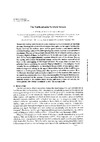Please use this identifier to cite or link to this item:
https://accedacris.ulpgc.es/handle/10553/1452
| DC Field | Value | Language |
|---|---|---|
| dc.contributor.author | Csanady, G. T. | en_US |
| dc.contributor.author | Pelegrí Llopart,José Luis | en_US |
| dc.contributor.author | Martins, Ana | en_US |
| dc.contributor.other | Facultad de Ciencias del Mar | - |
| dc.contributor.other | Departamento de Física | - |
| dc.date.accessioned | 2009-10-08T02:31:00Z | - |
| dc.date.accessioned | 2018-03-07T08:56:34Z | - |
| dc.date.available | 2018-03-07T08:56:34Z | - |
| dc.date.issued | 1996 | en_US |
| dc.identifier.isbn | 9168370 | - |
| dc.identifier.issn | 0916-8370 | en_US |
| dc.identifier.other | 868 | - |
| dc.identifier.other | Scopus | - |
| dc.identifier.uri | https://accedacris.ulpgc.es/handle/10553/1452 | - |
| dc.description.abstract | Western boundary currents are the locus of intense nutrient transport, or nutrient streams. The largest fraction of this transport takes place in the upper-thermocline layers, between the surface layers (where speed reaches a maximum) and the nutrient bearing strata of the subtropical gyres (where nutrient concentration is maximum). The core of the nutrient stream of the North Atlantic subtropical gyre is located slightly offshore the Gulf Stream, its density coordinate centered on the 26.5-27.3σ θ -band. approximately constant along the axis of the stream. During late spring and summer the nutrient stream reaches the surface seasonal mixed layer at the outcropping of this isopycnal band. We argue that this must be a principal factor sustaining the seasonal high productivity of the subpolar North Atlantic Ocean. Additionally, we investigate the possibility of intermittent shearinduced diapycnal mixing in the upper-thermocline layers of the Gulf Stream, induced by frontogenesis taking place during some phase of the meanders, Here we illustrate that diapycnal mixing has a maximum at the location of the nutrient stream, being associated to observed nutrient anomalies. We suggest that diapycnal mixing associated to the passage of steep meanders brings nutrients from the nutrient stream to the shallow photic layers, and sustains intermittent (day-to-week) patchy (10-100 km) productivity oser the stream itself. | en_US |
| dc.language | eng | en_US |
| dc.relation.ispartof | Journal of Oceanography | en_US |
| dc.source | Journal of Oceanography [ISSN 0916-8370], v. 52 (3), p. 275-299, (Enero 1996) | en_US |
| dc.subject | 2510 Oceanografía | en_US |
| dc.subject.other | Corrientes marinas | en_US |
| dc.subject.other | Atlántico Norte | en_US |
| dc.title | The North Atlantic nutrient stream | en_US |
| dc.type | info:eu-repo/semantics/article | en_US |
| dc.type | Article | en_US |
| dc.identifier.doi | 10.1007/BF02235924 | en_US |
| dc.identifier.scopus | 0029903571 | - |
| dc.contributor.authorscopusid | 7003869003 | - |
| dc.contributor.authorscopusid | 7005247514 | - |
| dc.contributor.authorscopusid | 55952668500 | - |
| dc.contributor.contentdm | CAPO | - |
| dc.contributor.contentdm | Física | - |
| dc.contributor.contentdm | Facultad de Ciencias del Mar | - |
| dc.identifier.absysnet | 188753 | - |
| dc.identifier.crisid | - | - |
| dc.description.lastpage | 299 | en_US |
| dc.identifier.issue | 3 | - |
| dc.description.firstpage | 275 | en_US |
| dc.relation.volume | 52 | en_US |
| dc.investigacion | Ciencias | en_US |
| dc.rights.accessrights | info:eu-repo/semantics/openAccess | - |
| dc.type2 | Artículo | en_US |
| dc.utils.revision | Sí | en_US |
| dc.contributor.wosstandard | CAPO | - |
| dc.contributor.wosstandard | Física | - |
| dc.contributor.wosstandard | Facultad de Ciencias del Mar | - |
| dc.date.coverdate | Enero 1996 | en_US |
| dc.identifier.supplement | - | - |
| dc.identifier.ulpgc | Sí | es |
| dc.description.scie | SCIE | |
| item.fulltext | Con texto completo | - |
| item.grantfulltext | open | - |
| crisitem.author.fullName | Pelegrí Llopart, José Luis | - |
| Appears in Collections: | Artículos | |
SCOPUSTM
Citations
61
checked on Jun 8, 2025
Page view(s)
156
checked on Jul 5, 2025
Download(s)
302
checked on Jul 5, 2025
Google ScholarTM
Check
Altmetric
Share
Export metadata
Items in accedaCRIS are protected by copyright, with all rights reserved, unless otherwise indicated.
